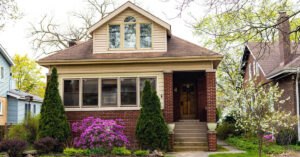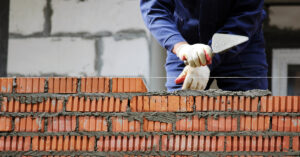For people interested in getting the most out of their dollar, manufactured homes remain one of the most affordable homeownership options available. Depending on the region of the country, a new manufactured home may cost half as much per square foot than a comparable site-built home, excluding the cost of the land, according to U.S. Census Bureau data.
In fact, in 2017, the average sales price of new single-family home was more than five times higher than the average sales price of a new manufactured home. Manufactured homes also often cost less than renting, depending on the market, while providing more square footage and even some welcome distance from your neighbors when compared with apartment living.
Builder confidence in the market for newly built single-family homes took a three-point rise to 66 this past May, according to the National Association of Home Builders’ housing market index, driven by improved demand and ongoing low overall supply. This marked the highest level of confidence since October 2018. Affordability challenges persist and remain an impediment to stronger sales, however.
Manufactured housing is already a major part of the affordable-housing solution. More than 22 million people in the U.S. live in manufactured housing. And there are more than 8.5 million manufactured homes in the U.S., which is nearly 10% of the nation’s housing stock, according to the Manufactured Housing Institute (MHI).
The market continues to grow as the industry is building more homes in response to the demand. As of 2017, manufactured-home production had increased for eight straight years and nearly 93,000 new manufactured homes were shipped throughout the U.S. that year, about 15% more than in the prior year, according to MHI.
Fortunately, there’s an increase in financing options as well. There are unique loan programs especially suited for the purchase of a manufactured home. As more and more families opt to build their American dream this way, learning the financing options to fund these construction-to-permanent manufactured homes may become a prerequisite for building your business as a mortgage originator.
Factory-built benefits
Factory-built homes increase homeownership opportunities by providing an environmentally responsible alternative to help American families find affordable housing with amenities that rival and often surpass more traditionally constructed homes. In most cases, manufactured homes are made in America, built by highly skilled workers aided by the latest manufactured techniques, and crafted with precision.
Homebuyers select the size and layout and customize it with upgrades to fit their needs, including modern kitchens with new appliances, luxury bathrooms and wood-burning fireplaces. Regardless of the specific amenities, all manufactured homes are entirely constructed in a controlled factory environment.
Each home is built according to the federal Manufactured Home Construction and Safety Standards, which went into effect in 1976. These regulations represented a significant change in the industry, and established a stringent series of construction and safety standards that ensure that today’s manufactured homes are far superior to the “mobile homes” of yesteryear. The U.S. Department of Housing and Urban Development (HUD) now regulates the design and construction, strength and durability, transportability, fire resistance, energy efficiency and overall quality of every home. It also sets standards for the heating, plumbing, air-conditioning, thermal and electrical systems.
In fact, you might not know that manufactured homes are engineered for wind safety and energy efficiency based on the region in which they are sold. Federal regulations require a design professional and quality-assurance professional during construction to verify that the home is built correctly. Conventional residential construction is often not subject to such a rigorous design and inspection system.
There are several major benefits to having your home built in a factory. Generally, there is less waste in the factory process than with site-built homes. All aspects of construction are quality controlled and inspected per HUD’s rigorous standards. In a climate-controlled environment, the weather doesn’t interfere with construction, causing delays or damaging building materials. In a factory, inventory is better controlled, and materials are protected from theft and weather-related damage. Construction supplies, as well as interior features and appliances, are purchased in bulk, all of which create additional savings.
Additionally, many of these homes can be upgraded to Energy Star or similar energy-efficient home packages. Increased energy efficiency helps increase the value of homeownership — not only by saving up to 30% on monthly utility bills, but some utility companies and power cooperatives offer rebates for homebuyers.
Array of financing
For mortgage originators, educating the client is key. Introducing manufactured housing as an affordable option and providing information about the available financing options is paramount.
Manufactured-housing finance has inherent complexity because the home starts off as personal property and converts to real property. It is vital to work with a lender that has a track record of experience specifically in manufactured housing, who can help guide a borrower, real estate agent and mortgage originator through the process.
There are a wide array of financing options, each with their own eligibility requirements and guidelines. Available programs for manufactured housing include the Federal Housing Administration (FHA), U.S. Department of Veterans Affairs (VA), U.S. Department of Agriculture (USDA), Fannie Mae and Freddie Mac.
FHA, for example, simply requires that the home is classified as real estate. It must be permanently affixed and not previously installed or occupied at any other site. The USDA, meanwhile, specifically stipulates that the property must be located in an eligible rural area; that the manufactured home must be less than 12 months old and never previously occupied; and that the date of the purchase agreement must be written within one year of the manufacture date and displayed on the plate attached to the unit. That, however, is just the tip of the iceberg for requirements.
In the past year, the government-sponsored enterprises (GSEs) have supplemented their manufactured-home financing options with additional programs. Fannie Mae’s MH Advantage and Freddie Mac’s CHOICEHome programs finance specially designated manufactured homes with features comparable to — and sometimes superior than — traditional single- family homes.
These manufactured homes must be titled as real property, meaning the borrower must own both the home and the underlying land. Improved interior features such as drywall, energy-efficient appliances and upgraded cabinets, as well as exterior amenities such as porches and garages, provide validation for the higher-quality craftsmanship evident in manufactured homes in recent years.
Through MH Advantage, for example, qualifying borrowers can secure financing with a downpayment as low as 3%. Loans also feature cancellable mortgage insurance and can be combined with other Fannie Mae programs like HomeReady or HFA Preferred mortgages.
You should be familiar with one-time close, construction-to-permanent loans. Designed for stick-built and modular homes, in addition to manufactured housing, this program offers an all-in-one financing option for construction, lot purchase and permanent mortgage funding with one closing, saving the borrower time and money.
By combining one-time close and downpayment-assistance programs, the world of homeownership opens up to a much broader range of borrowers. This includes people who may have been months or years away from saving up a traditional down-payment, as well as those who were turned off by traditional construction loans or manufactured- housing loans that required two closings and borrower requalification.
• • •
In the U.S. today, manufactured homes account for about 80% of new homes that cost less than $150,000, according to manufactured-home company Clayton. Manufactured housing is providing an opportunity for people to be homeowners, often at a fraction of the cost of traditional site-built homes.
Mortgage originators should embrace manufactured homes as a solution to the nation’s lack of affordable housing and continue to educate themselves on the variety of loan programs to finance them. As more homebuyers are choosing to build their American dream, who is prepared to help them?
Author
-

Bill Packer is executive vice president and chief operations officer at American Financial Resources (AFR) Inc. With 30 years of experience in financial services, Packer joined AFR in 2015 and currently oversees operations, technology, new-product development and marketing. AFR is the nation’s leading FHA 203(k) lender for sponsored originations, and is an innovator in the construction and renovation lending space.



